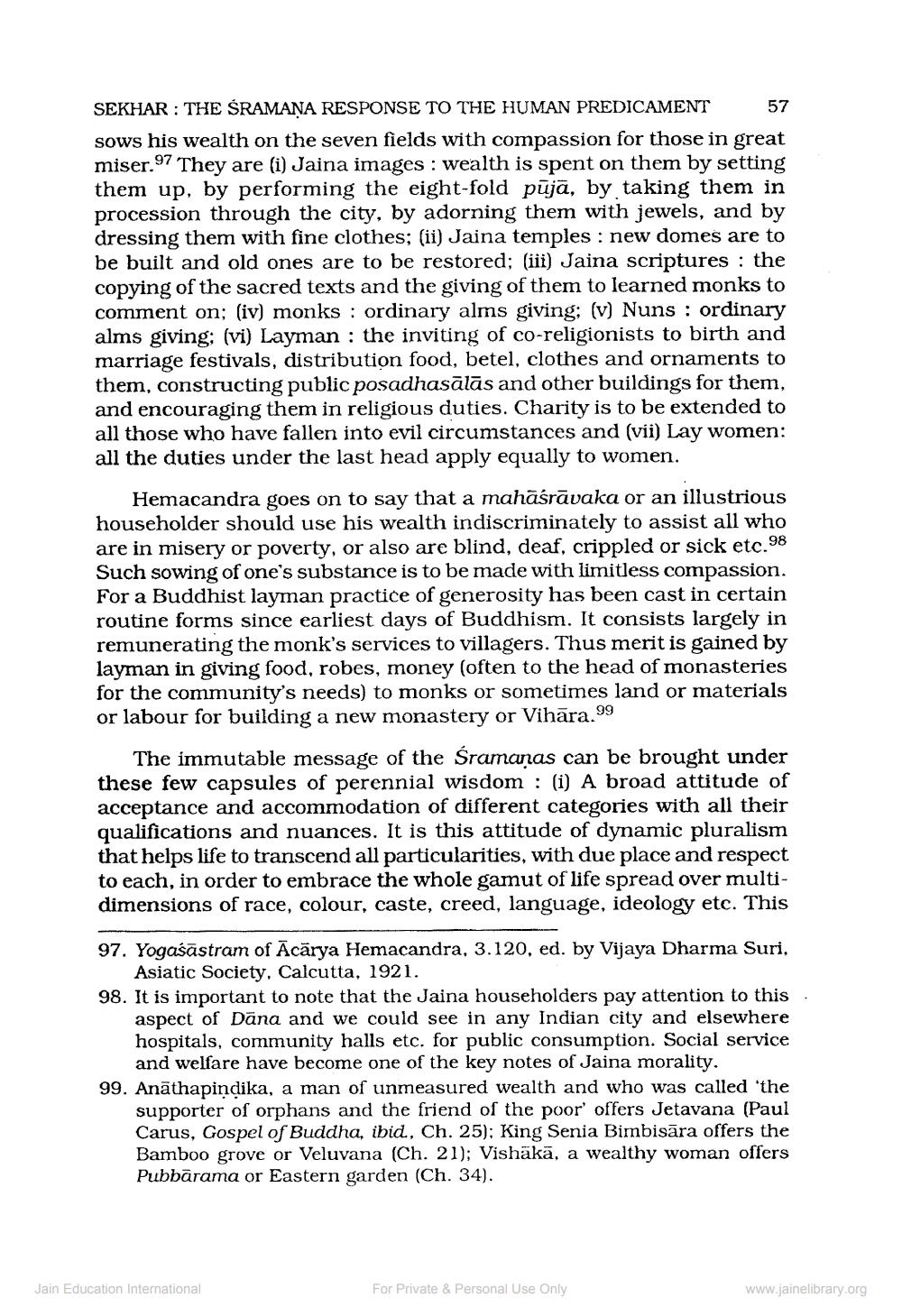________________
SEKHAR: THE ŚRAMANA RESPONSE TO THE HUMAN PREDICAMENT
sows his wealth on the seven fields with compassion for those in great miser.97 They are (i) Jaina images: wealth is spent on them by setting them up, by performing the eight-fold pūjā, by taking them in procession through the city, by adorning them with jewels, and by dressing them with fine clothes; (ii) Jaina temples: new domes are to be built and old ones are to be restored; (iii) Jaina scriptures: the copying of the sacred texts and the giving of them to learned monks to comment on; (iv) monks ordinary alms giving; (v) Nuns: ordinary alms giving; (vi) Layman: the inviting of co-religionists to birth and marriage festivals, distribution food, betel, clothes and ornaments to them, constructing public posadhasālās and other buildings for them, and encouraging them in religious duties. Charity is to be extended to all those who have fallen into evil circumstances and (vii) Lay women: all the duties under the last head apply equally to women.
Hemacandra goes on to say that a mahāśrāvaka or an illustrious householder should use his wealth indiscriminately to assist all who are in misery or poverty, or also are blind, deaf, crippled or sick etc.98 Such sowing of one's substance is to be made with limitless compassion. For a Buddhist layman practice of generosity has been cast in certain routine forms since earliest days of Buddhism. It consists largely in remunerating the monk's services to villagers. Thus merit is gained by layman in giving food, robes, money (often to the head of monasteries for the community's needs) to monks or sometimes land or materials or labour for building a new monastery or Vihāra.99
57
The immutable message of the Śramanas can be brought under these few capsules of perennial wisdom: (i) A broad attitude of acceptance and accommodation of different categories with all their qualifications and nuances. It is this attitude of dynamic pluralism that helps life to transcend all particularities, with due place and respect to each, in order to embrace the whole gamut of life spread over multidimensions of race, colour, caste, creed, language, ideology etc. This
97. Yogaŝastram of Acarya Hemacandra, 3.120, ed. by Vijaya Dharma Suri, Asiatic Society, Calcutta, 1921.
98. It is important to note that the Jaina householders pay attention to this aspect of Dana and we could see in any Indian city and elsewhere hospitals, community halls etc. for public consumption. Social service and welfare have become one of the key notes of Jaina morality.
99. Anathapindika, a man of unmeasured wealth and who was called 'the
supporter of orphans and the friend of the poor' offers Jetavana (Paul Carus, Gospel of Buddha, ibid., Ch. 25); King Senia Bimbisāra offers the Bamboo grove or Veluvana (Ch. 21); Vishaka, a wealthy woman offers Pubbārama or Eastern garden (Ch. 34).
Jain Education International
For Private & Personal Use Only
www.jainelibrary.org




